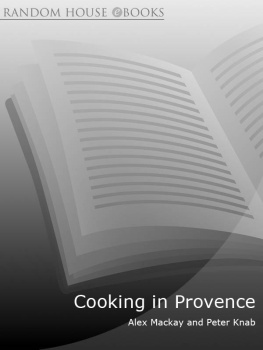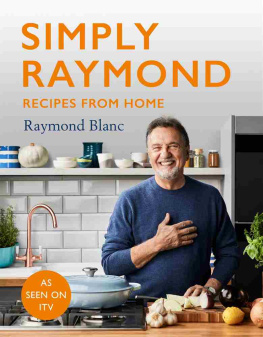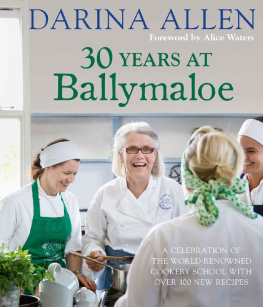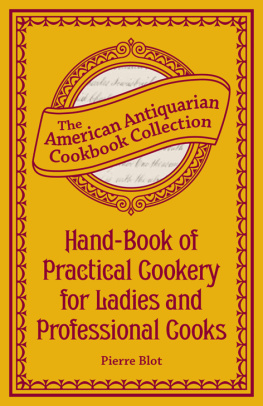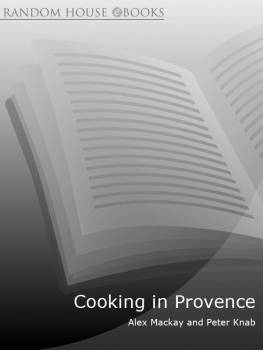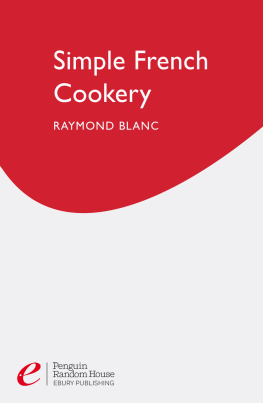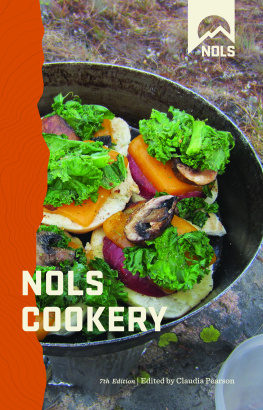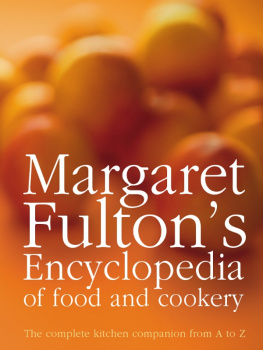About the Book
Cooking in Provence is a collection of recipes born out of the experience of running a cookery school in the heart of the Provenal countryside. When talented young chef Alex Mackay and internationally renowned photographer Peter Knab realised their dream of opening a school La Baou dInfer not far from St Tropez, they were inspired by the intoxicating flavours and food of the region. The recipes offered here reflect the changing seasons dishes that truly capture the regions unique identity.
From refreshing summer classics such as Salade Nioise and Soupe au Pistou and the warming comfort of Daube en Boeuf and Bouillabaisse, to indulgent puddings such as Tarte aux Pommes and Millefeuille aux Fraises, each recipe is clearly presented and gloriously photographed on location in Provence.
Accompanying the recipes are vivid descriptions of the scenery, markets and people. Together they conjure a vision of Provence and the food integral to the region from the fish caught along its breathtaking coastline, to the aromatic herbs and vegetables harvested from its fields and the fruit grown in its orchards. This sumptuous book provides not just a wonderful collection of mouthwatering dishes, but a slice of the warmth and beauty of this enduringly popular region. It is an indispensable companion for lovers of good food and the good life.
ACKNOWLEDGEMENTS
Alex
To Jess with all my love for all your love and support.
Special thanks to Pete and Di for their great friendship, for being the most wonderful photographer and stylist to work with and, not least, for putting up with me every summer.
Thanks to Delia for her lovely foreword and very generous encouragement.
Thanks to my editor Susan Fleming; Mum; Raymond Blanc for the huge part hes played in my career; my former assistants at Le Baou, Mary OHare and Florence.
Heartfelt thanks to Fiona MacIntyre, Carey Smith and Imogen Fortes at Ebury Press for bringing this book back to life. Also to Tony at Estuary English for the new design.
Thanks to my old suppliers Jacky, Doume and Bruno for their glorious produce.
Lastly, thanks to all of our guests and friends who made the five years of Le Baou so special and who have tried, tested and tasted all of these recipes with bubbling enthusiasm and barrels of laughter while living and cooking in Provence.
Peter
This is the easy part: saying thank you to everyone who helped in making this book a reality. Easier still is saying a special thank you to Diana who has made this corner of Provence so special.
The hard part is having to cope with all those endless days of glorious sunshine.
Harder still is having to eat all the wonderful meals Alex is able to invent with such evident skill and laissez-faire.
Le Baou dInfer
I FIRST MET Peter and Diana Knab in 1995 while working with Raymond Blanc on A Blanc Christmas. We became close friends and, one evening, at a jazz club in Soho, we hatched a plot that was to become Le Baou dInfer Cookery School. Pete and Di were looking for an excuse to spend more time at their house in Provence. An Antipodean chef-teacher, young enough to be their son, was an unlikely part of that plan, but the seed was sown. The logistics were discussed, and soon the house was being adapted to its new role.
We agreed to run the school for five years and to give it everything we had during that time. Our guests came from all over the world to be captured by the joy of cooking in Provence. Their ages, backgrounds and abilities varied enormously but the beauty and bounty of Le Baou and Provence brought them together. Many returned each year and the feel was that of a house party with a never-ending stream of meals, conversation and laughter.
Our days began early and finished late but were so much fun that time slipped by unnoticed. I was never more alive than when I was in a happy and very noisy group of students, with pans, produce and ideas circling the kitchen. It was sharing rather than teaching; talking about, touching, smelling and greedily tasting the ingredients and dishes.
Pete was the head wine buyer and taster (the wine cellar was referred to as Petes corner) and host. He also became an ace barterer and spotter of quality ingredients. Our suppliers were sure to have their best produce ready for his daily visit to Cogolin. Theyd also quite happily halt the mid-morning traffic to load up his car. Di was the busiest of us all. She never stopped, be it banishing weeds from her huge and beautiful garden, keeping the house running or regaling us all with hilarious tales of her travelling days. Pete would play the straight man to some of these stories but occasionally insist on different versions of the wilder ones.
We gave it all we had and the house was full for five years and we look back with great pride at the success that was Le Baou dInfer Cookery School.
There are days when I miss it terribly. When I do, I open this book and I look at the pictures and I read. Each recipe is a memory: I remember our guests cooking the dishes and I remember their pleasure. I go to my kitchen, I cook and I smell and I taste my way back to my beloved Provence. Join me.
Les Jardins de Provence
PROVENCE IS ONE huge and beautiful garden. The vegetables and fruit bask in the sunshine and ripen as they should, on their vines or trees. The freshness and abundance of vegetables is proudly displayed in weekly markets and in the many greengrocers which, at least for now, are still found in most village streets. My regular greengrocer, Bruno, has a great little shop in Cogolin with a boat in the middle of it that comes halfway out into the street. Im not sure why, and for some reason have never asked; maybe it used to be a fishmongers. In any case, the care which he and his four staff take with the vegetables and fruit and the beauty of his shop are astonishing.
On the right as you enter are carefully lined-up aubergines, peppers, tomatoes and cucumbers, as well as red, white and yellow onions, garlic in plaits, and loose and huge banana shallots, most of which are larger than the onions. There are many different types of potatoes, and Bruno will be able to tell you what to use each for. The relative merits of Rattes and Grenailles for salad is a matter more for personal choice, but hell happily scrape and cut a few in the shop so you can see and feel which have the firmest, yellow-tinted flesh. Big baskets of herbs, rocket and the mixture of tiny salad leaves known as mesclun run down the centre. Alongside these are great bunches of artichokes, their leaves tightly bunched and stalks carefully tied, and often up to five varieties of green beans. On the left there are all of the fruits. Figs which have two seasons, first in spring and another that coincides with the harvest in September sit in their paper wrappers like cupcakes, as do any of the more delicate and very ripe stone fruit. There is a big basket of lemons with their leaves still attached, which are knobbled, natural and richly scented. In Provenal folklore the lemon is said to fill you with the suns energy. When added to your food it causes a bright, positive force to flow throughout and charge your body and mind. This is possibly why the basket is always half full!

